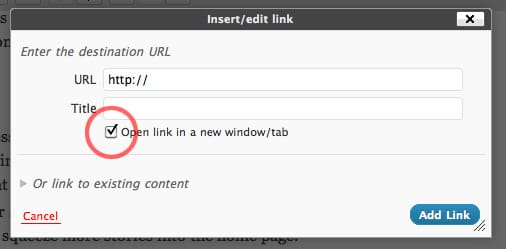 This style guide is intended as a reference for TTAG writers, to help them get up to speed quickly, regarding the writing conventions, voice, and other minutia associated with having a consistent look and feel to The Truth About Guns.
This style guide is intended as a reference for TTAG writers, to help them get up to speed quickly, regarding the writing conventions, voice, and other minutia associated with having a consistent look and feel to The Truth About Guns.
Voice – Keep it Active
Nothing screws up an otherwise well-written post than the passive voice. Passive voice sentences suck all the energy and action out of a paragraph. Avoiding them like the plague is vital. (Grammatical humor. Gotta love it.)
Attitude – Keep it Snappy
From the beginning, TTAG has had a certain attitude in every post. It’s a little irreverent (okay…a LOT irreverent), cheeky, witty, and the antithesis of stuffy, boring, and dull. Past that, it’s hard to describe. Before you submit a story to TTAG, read a bunch of our posts, and try to get a feel for that voodoo that we do so well. Then try to find a way to adapt your writing style to fit in with what we do.
Leads – Keep ’em Riveting
You can write the most interesting story in the history of story writing, and if you don’t have a first sentence that hooks the reader, nobody will ever read it. (Okay…your mom might read it. But only as a favor to you.) Again, go back and read other TTAG posts. Don’t you feel as if, after reading the first line, you want to read more? The lead is essential – if you wanna be read, write strong leads.
Headlines – Keep ’em Pithy
Did you know that most people will click through on a story based on the headline? And did you know that if the headline piques their curiosity, and they read your lead and find it boring, they’ll pass on by? The headline is the bait. The lead is the hook. Both need to grab your reader by the throat, shake ’em and not let ’em go.
Visuals – Keep them Relevant
You can go two ways with visuals…literal or whimsical. Sometimes, even both will work. For instance, if you’re going to write a story about a gun that is underpowered and doesn’t work reliably, you might either choose a photo of the gun itself, or put up an image of a broken toy gun, as a sort of metaphor. It depends on the post, which one is the better choice. But think creatively – it’s what keeps readers coming back for more. Do remember, every story needs at least one visual above the fold.
Above the Jump – Keep it Brief
We try to pack as much snarky goodness into the TTAG home page as possible. This means, unless your story is just a few lines long (as it might be if the story is really a video), you’re going to have to use what WordPress calls a “More” tag. clicking this button: ![]() inserts a jump cut into your story, so that the bulk of it appears somewhere other than the home page. This lets us squeeze more stories into the home page.
inserts a jump cut into your story, so that the bulk of it appears somewhere other than the home page. This lets us squeeze more stories into the home page.
Links – Keep ’em Local
Here’s the think about links. There are two ways to configure ’em. You can set it up so that the link opens in the current window or tab, or so that it will automagically create a new window/tab for the linked page. Here’s the rule of thumb: if you link to a previous post on TTAG, it’s fine to allow navigation within the current window. If you’re linking to another site, however, it’s best if you’ll click the checkbox (pictured in the red circle below) that will force the browser to open the page in a new window or tab.
 That way, we don’t force readers to navigate back to TTAG when they’ve finished reading the linked site. This turns out to be pretty important, as far as our site stats go. When you link to an outside site, readers tend to click through to other links and get lost. That’s a problem. If you spawn a new tab or window on linking to an outside site, you’ll help increase time on TTAG, and help readers to get back to where they were (on your post!).
That way, we don’t force readers to navigate back to TTAG when they’ve finished reading the linked site. This turns out to be pretty important, as far as our site stats go. When you link to an outside site, readers tend to click through to other links and get lost. That’s a problem. If you spawn a new tab or window on linking to an outside site, you’ll help increase time on TTAG, and help readers to get back to where they were (on your post!).
Punctuation – Keep it Consistent
RF and I have a running discussion/argument/joke about my love of elipses: … and typographic dashes: – and —. As a graphic designer, I appreciate the differences, and as a reader, I get how much easier it is to read a story that’s typeset properly.
NOTE: we don’t use the true typographic quotes. We should. But we’re not THAT anal. We will, however, use the typographic N-dash in place of the abhorrent practice of typing two minus signs in a row to make a longer dash. In order to avoid snarky emails (from me) and Fearless Leader having to listen to kvetch, if you’re not gonna use real dashes, please don’t use double minus signs. You’re not fooling anybody.
Also note that it’s easy to use ellipses – but if you’re not going to use the typographic symbol for it, the proper way to do it would be to use three periods in a row, with no spaces before, in-between, or after.
Here’s the rundown on accessing special characters on your computer:
| Symbol | Name | Windows | Mac |
|---|---|---|---|
| … | elipsis | Option + ; | |
| – | n-dash | Alt + 0150 | Option + minus key |
| — | m-dash | Alt + 0151 | Option + shift + minus key |
| © | copyright | Alt + 0169 | Option + g |
| ® | registered trademark | Alt + 0174 | Option + r |
| ™ | trademark | Alt + 0153 | Option + 2 |
| ¡ | upside-down exclamation | Alt +0161 | Option + 1 |
| ¿ | upside-down question mark | Alt + 0191 | Option + shift + ? |
| Euro currency | Alt + 0128 | Option + shift + 2 | |
| £ | British pound sterling | Alt + 0163 | Option + 3 |
| ¢ | cent symbol | Alt + 0162 | Option + 4 |
| • | bullet point | Alt + 0149 | Option + 8 |
| º | degree symbol | Alt + 0176 | Option + 0 |
| √ | check mark | Option + v | |
| ≤ | less than | Option + , | |
| ≥ | greater than | Option + . | |
| ± | plus/minus | Alt + 0177 | Option + shift + = |
| á | accute | * | Option + e, then type the character to accent |
| à | grave | * | Option + `, then type the character to accent |
| ä | umlaut | * | Option + u, then type the character to accent |
| ã | tilde | * | Option + n, then type the character to accent |
| â | circumflex | * | Option + i, then type the character to accent |
| ç | Frenchy-French “c” | Alt + 0199 | Option + c |
| “ | open quote | Alt + 0147 | Option + [ |
| ” | close quote | Alt + 0148 | Option + shift + [ |
| ‘ | open single quote | Alt + 0145 | Option +] |
| ’ | close single quote | Alt + 1046 | Option + shift + ] |
* Windows has it’s own charming way of dealing with foreign, accented characters – each one is assigned it’s own Alt + XXXX code. If you’re curious, Google “ALT KEY CODES WINDOWS” and you’ll find resources with these listed.
Spelling – Don’t Embarras Yourself
With auto-spell check, there’s almost no excuse for you to misspell a word. Almost. However, grammar is a different story. Take the extra time to check your posts. The embarrassment you save will be your own.
Length – Not too long, not too short – just write.
Back in the (TTAC) day, stories had to be exactly 800 words. Why? I dunno. Thankfully, that rule has gone by the wayside here on TTAG. Our stories generally fall into three categories: Brief (for videos/Questions of the Day, et cetera), Long (editorials, gun reviews, literary works), and Medium (everything else). There’s no requirement on length here, any more. But don’t pad the story just to make it longer – that breeds boring prose. And don’t skimp on the text, just to get something up there. Clear, concise, witty prose with an attitude is what we’re going for here.
Tag – You’re It.
Wanna get your story read by all the search engines? Tag it! Not just picking the right category, but adding in text tags so that the web crawlers can find it.
Gravitar? We don’ Need No Steenkin’ Gravatar!
Um…Yeah. Ya do. If you can visit gravatar.com and create your own icon, you won’t have to see that stupid, generic silhouette by every one of your posts. Do it. Please? Click here to read up on how to do it.
Biography – Coming Soon to an About Page Near You.
Yes, Virginia, there is an about page. And it needs your bio to be complete. Send us your bio and photo, and we’ll add it in.
Questions? – We’re Here to Help.
Contact RF for almost any question. I can help you with the technical end, but it’s usually better to have RF ping me, so i don’t have to field a lot of the same kinds of questions at once.
Other Information – More Writing Hints.
There are many more writing hints I could share with you, but suddenly I am run over by a truck.
-the end-
